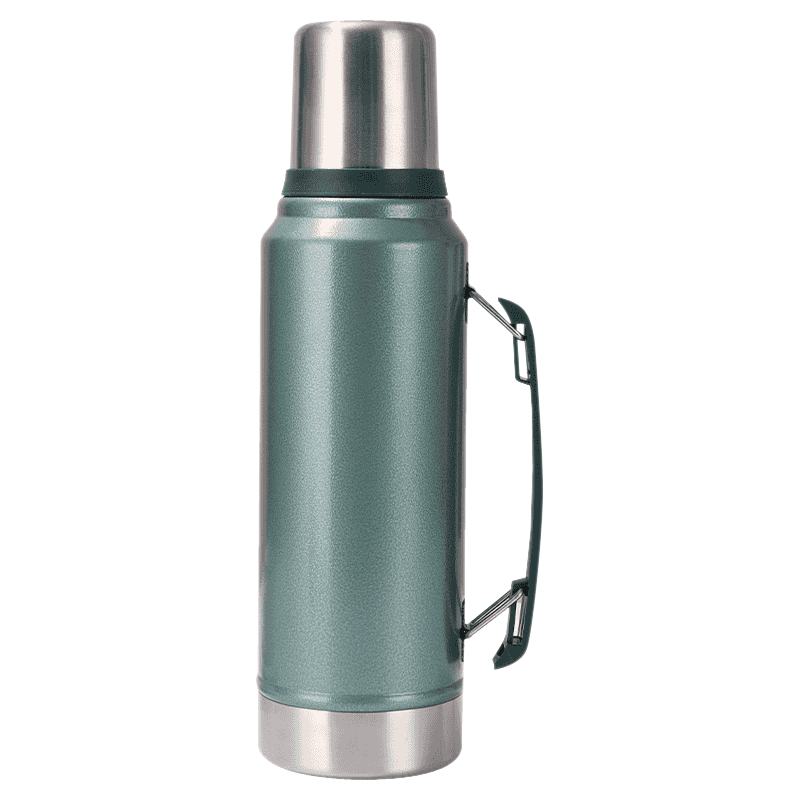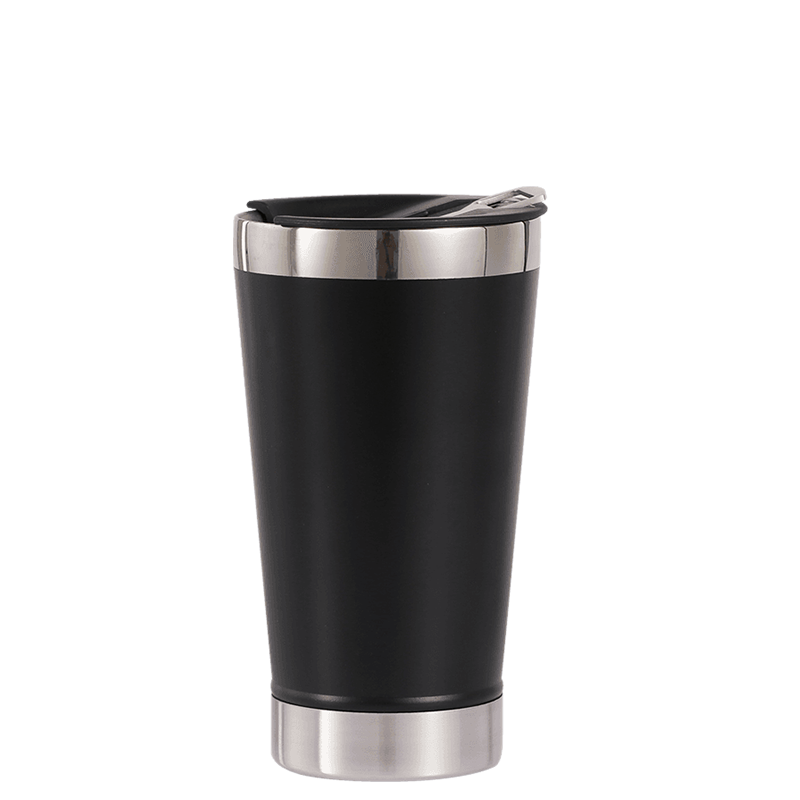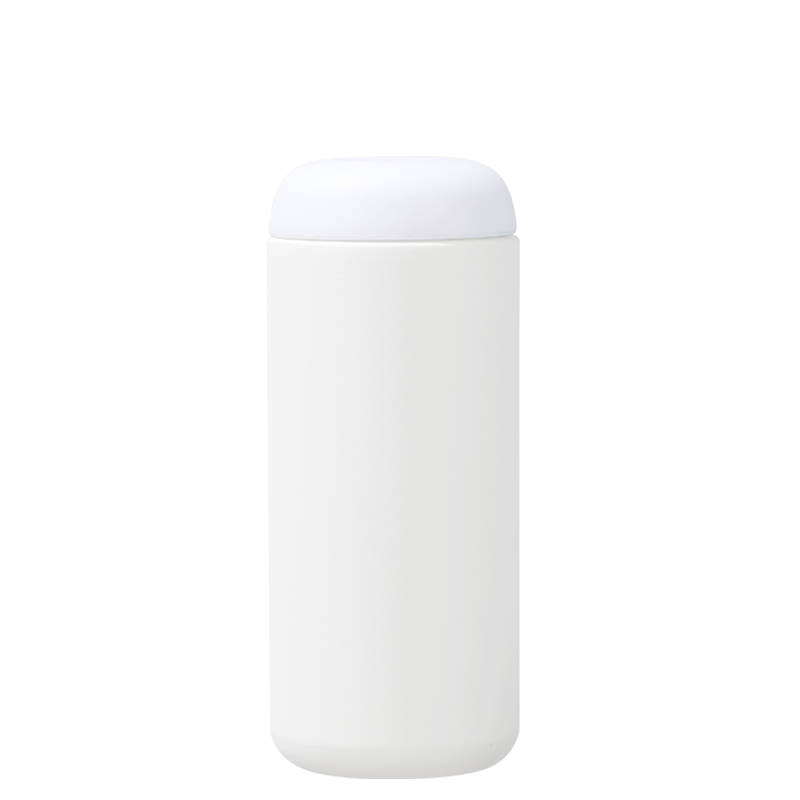
+86-13566758039

Industry News
Have you ever filled your trusty thermos with water only to discover a strange metallic taste in your tea? Or wonder if that energizing sports drink is quietly reacting with the thermos itself? The difference in the material of the lining of a stainless steel thermos is not just a technical term, it profoundly affects the purity and taste of the beverage. Understanding the differences between common stainless steel types can help you make the right choice and ensure a clean and refreshing drink every time. Some brands that focus on material integrity always regard drinking water safety as the fundamental issue.
Why does the type of steel my thermos is made of affect my beverage?
Stainless steel is named for its exceptional resistance to rust and corrosion, largely due to a protective chromium oxide layer (passivation layer) that forms on its surface. However, this barrier is not impenetrable.
Sources of Challenge: Natural acids in juice, electrolyte salts in sports drinks, high mineral content in hard water, and even residual bacteria and their metabolites can pose a threat to the passivation layer. Potential Risks: If this protective film is partially damaged, trace amounts of metal components (such as iron, nickel, and chromium) could theoretically leach into the beverage. While the amount of leachable metals (e.g., iron, nickel, and chromium) that meet safety standards is extremely low and generally well below safety thresholds, it could contribute to the so-called " metallic taste ".
The criticality of materials: Therefore, the specific composition of stainless steel and its ability to withstand the various challenges of daily use (such as acidic drinks, salt, repeated cleaning) are crucial. They determine whether a thermos can reliably protect the pristine taste and safety of your beverage over the long term. Choosing a thermos bottle is essentially choosing a trustworthy guardian for your daily drinking water.
304 Stainless Steel: A Reliable Choice for Everyday Needs
1. 304 stainless steel, with its balanced performance and good value, is a common material for many kitchen utensils and drinking utensils.
Is it safe and reliable?
Yes. This alloy composition complies with generally recognized safety requirements for food contact materials. The chromium and nickel elements it contains can effectively form and maintain a passivation layer, which can effectively resist rust and corrosion under normal conditions. Ideal usage scenarios: 304 stainless steel thermoses, when maintained according to guidelines, demonstrate compatibility with water, coffee, tea, and typical non-acidic beverages (including standard fruit juices) during room-temperature storage or short-term use.
2. 316 Stainless Steel: Providing Enhanced Protection for Harsh Applications
316 stainless steel builds on 304 stainless steel by adding a key element: molybdenum (typically present in a concentration of 2-3%). This seemingly minor addition significantly enhances its protective capabilities.
Is it essential? Not all users require 316 stainless steel. For those who primarily store water, coffee, or tea in ordinary environments, a high-quality 304 thermos remains a safe and practical choice. The value of 316 lies in its ability to withstand sustained, specific stressors, where its enhanced corrosion resistance provides a stronger foundation for long-term beverage purity and taste consistency.

Is the metallic taste caused only by the type of steel? What other factors may contribute?
The unpleasant metallic taste sensation in beverages is often caused by many factors, with the grade of stainless steel being just one potential factor.
Damage to the protective layer: Physical scratches on the bottle's interior (possibly caused by rough cleaning tools or metal spoons and forks), stubborn scale deposits from long-term use in hard water, or bacterial/mold biofilm growth due to inadequate cleaning can damage or penetrate the passive layer, exposing the underlying metal.
Accelerated chemical reactions: The acidity of the beverage itself (such as coffee, carbonated drinks, juice) or the acid produced by bacterial metabolism may accelerate the corrosion process under certain conditions.
Manufacturing residues and water quality: Clean new bottles according to instructions prior to initial use. This removes production-related residues that could transfer noticeable flavors to beverages. Water quality itself (such as soft/acidic water with a very high mineral content or a low pH) can also make it more susceptible to interaction with steel surfaces.
The critical role of maintenance habits: Insufficient cleaning routines may allow persistent buildup of bacteria, mold, and mineral deposits. This environment fosters localized acidity, which might encourage corrosion processes and material degradation over time.
How do bottle selection and maintenance practices contribute to satisfactory long-term use?
After understanding the differences in materials, making a wise choice and providing proper care are key to ensuring a positive experience.
When should you consider replacing your thermos?
Bottles have defined usage periods. Monitor for these indicators to determine replacement timing:
How can brands serve their customers through product design and selection?
Responsible brands strike a balance between material selection, process technology, and user experience when developing thermoses:
Safe drinking water starts with a smart choice
The value of a thermos goes far beyond simply maintaining temperature; it impacts the purity and health of your daily drinking experience. Informed stainless steel selection (considering 304/316 environmental resistance profiles), awareness of metallic taste origins (cleaning, maintenance, usage), and proper care practices enable reliable long-term hydration solutions.
Some brands are committed to transforming technical details into a user-perceivable peace of mind experience. Through transparent material descriptions, user-friendly and easy-to-clean designs (such as wide mouths and removable seals), and product series designed for different usage intensities, consumers can clearly make more suitable choices based on their own drinking habits and environmental challenges. Whether it is to meet the convenient needs of daily commuting or to cope with the harsh challenges of outdoor exploration, the attention to materials and craftsmanship will eventually turn into the purity and safety of every sip of drinking water.
Your email address will not be published. Required fields are marked *








* Your email is safe with us, we don't spam.


Our company's products include vacuum flasks, beer mugs, coffee mugs, car tumbler, fire stove and tensile parts, etc.
Phone: +86-13566758039
Tel: +86-0579-87171178
Fax: +86-0579-87171178
E-mail: [email protected]
Add: No.29, Qiaodong Road, Qiaotouzhou Village, Longshan Town, Yongkang, Jinhua, Zhejiang, China.

 English
English 中文简体
中文简体 日本語
日本語 Français
Français Español
Español